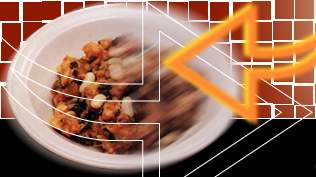

 |
 |
||||
Homemade breadUp until the mid '50's, all of the country families still made bread at home, baking it in wood ovens. The country households always had an oven that was shared by many families. Bread was made about once a week. The massaia (farmer's wife) prepared dough in one side of the madia (a special bread making table), forming a crater with a good amount of flour. In the middle she'd put the leavening made from some of the dough left over from the last time, stored in flour in the madia. This dough, sometimes with a little brewer's yeast added, but often plain, was diluted with lukewarm water and kneaded together with the flour from the pile. The massaia dusted flour on the dough that she had kneaded, crossed herself and traced a cross on top of it. After a few hours, the dough was ready. The dough was thickened with more flour and kneaded by hand in the madia. Then they were shaped and placed on the "bread table" to rise. They were placed on pieces of fabric, "the bread fabric" that both separated and covered them. A double cross was cut into each piece of dough in the row of bread. While the bread was rising, the massaia heated the oven by burning some rags in it. A good massaia knew how to achieve just the temperature and how to test the temperature by checking the color of the side that should be white. Then she cleaned the oven of the coals and ashes. First, she piled them together with a stick, "the oven stick". Then she put a large leafy branch on the top and finished cleaning the bottom of the oven. Then she closed the oven and waited five or ten minutes for the heat to collect. The bread had finished rising. The pieces of dough were put in the oven one after the other with "the oven stick" and placed in rows. Then the oven was closed with the beccatoio (a special stick for closing hot ovens.) Between 10 and 15 loaves were baked. The baking began and the smell spread through the air. The massaia checked on the progress of the baking. If the bread was getting too dark, she covered the loaves with sheets of newspaper.Keep in mind that the wood ovens didn't have thermometers. Only the massaia's experience and simple, but effective tricks kept the temperature right. At the end of the baking, all of the loaves were placed on the bread table and brought home. The children crunched on some pieces of crust that that had broken off. Two pieces of still-warm bread with two slices of lard were a real delicacy.
|